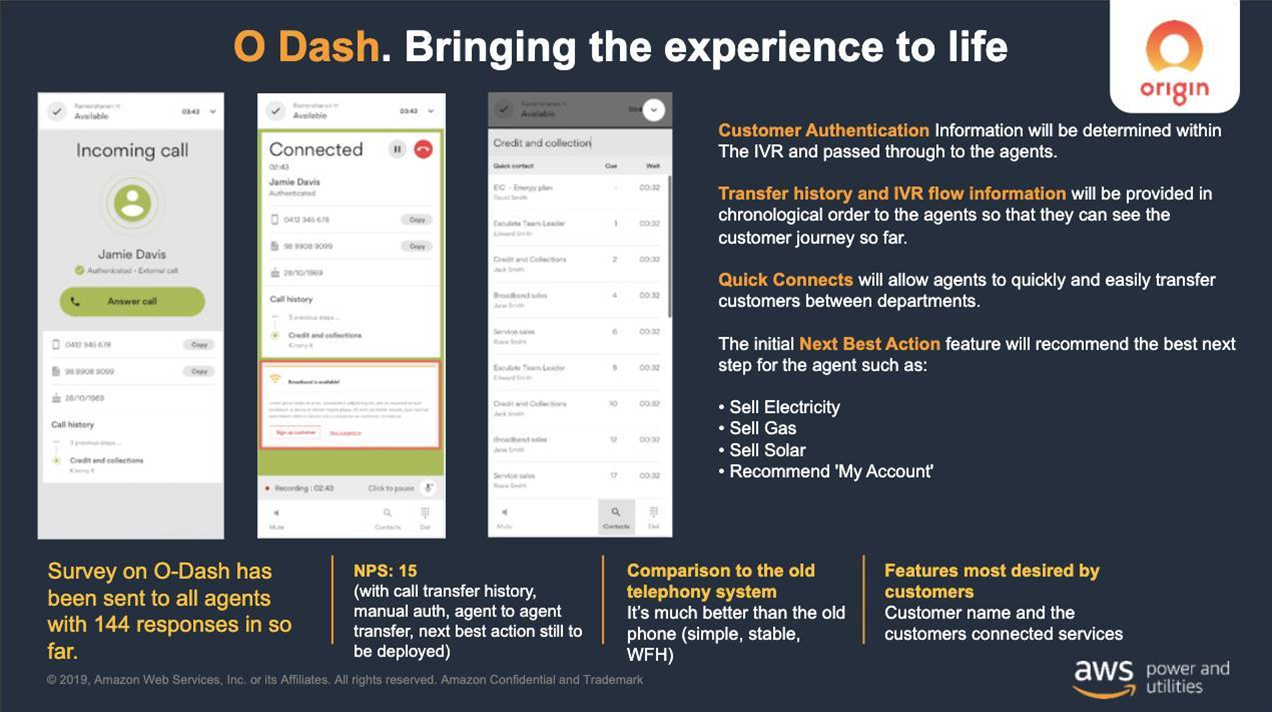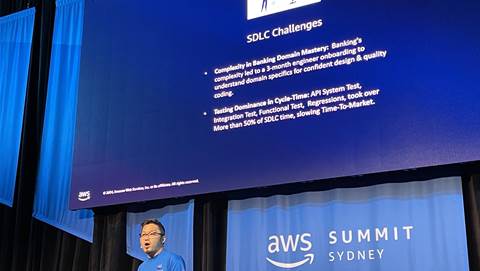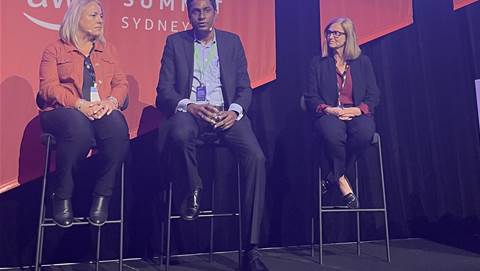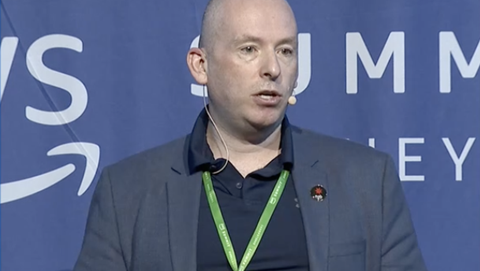Origin Energy has spent the past year quietly bedding down Amazon Connect as part of its Retail 2020 transformation, expanding self-service options for its 4 million-strong customer base.
.jpg&h=420&w=748&c=0&s=0)
The utility is separately on an extended multi-year migration of most IT workloads into the public cloud, known as its ‘Cloud 2022’ strategy, and will today formalise AWS as its “preferred cloud provider” for that strategy, though its work with AWS stretches as far back as 2016.
While the migration of workloads into AWS is ongoing, much of the innovation in recent months has been centred on the company’s separate Retail 2020 transformation.
Under Retail 2020, Origin Energy has deployed Amazon Connect, a cloud-based contact centre platform that will provide smart interactive voice response (IVR) capabilities for the company.
It is already on its third internal release of Connect since first piloting the platform back in August 2019, and continues to expand Connect’s reach.
Chief transformation and digital officer Rod van Onselen said in a LinkedIn post last week that Origin is now “live with a global first, launching Apple Business Chat utilising our new Amazon Connect contact centre platform.”
“Customers can now contact Origin via their iOS Messages app from places like Google Search, Siri, Maps, Safari etc, where previously they’d have had to call,” van Onselen wrote.
“[It’s] simple, intuitive and backed with automation to help resolve customer queries more quickly and conveniently.”
The case for Connect
Origin Energy’s experience design director Adam Crapp told a recent AWS webinar that the utility had gone “from zero to full deployment” of Amazon Connect in around nine months.
“We've been working with Amazon since 2016 in a bunch of different ways and really just pushing Connect in the last nine months in what it can do,” he said.
Crapp said that Origin saw an opportunity through the Retail 2020 transformation to “create a powerful and simplified experience for our customers but also our agents at the same time.”
“What we've been able to do is leverage the capabilities within AWS ecosystem to assist with that, and the tools that are provided within AWS have really allowed us to push our thinking but also what we provide to customers and to agents,” he said.
Crapp said the focus so far had been on taking things that would usually be resolved with an agent - such as organising new utility connections when moving house - and automating them as much as possible.
He said that Origin operated in “a really competitive market”, and had been targeting ways to reduce costs to serve customers, while improving the service it was able to provide.
Origin’s existing contact centre platform, Avaya, had also reached its end-of-life and needed to be replaced.
“Smart IVR was really a key initiative to help enable some of those reductions, but also to help us think differently about how we engage with customers,” Crapp said.
“What Amazon has allowed us to do is to introduce a foundational contact centre capability … but it's really been underpinning everything we've been doing.”
Crapp said Connect is helping to reduce call transfers, speeding up resolution times; free up agents to handle higher-value call types; and introduce a greater degree of self-service to many types of interactions.
Early use cases
Crapp detailed three early use cases for Amazon Connect that formed the basis of a proof-of-concept run in August last year.
One of the use cases tested whether Origin could make it simpler for customers to extend an existing energy plan they were on.
“Usually people need to call up, go through messaging with an agent and talk about the plan that they're going on,” Crapp said.
The company was able to set this up in Connect to the point that most of the test cohort were able to extend their existing plan automatically.
“Importantly, at the end customers scored the process a nine out of 10 for ease, so [there was] a real willingness among customers to do these simple interactions through this IVR journey.”
The other two test use cases were around digital deflection and smart routing.
“With digital deflection, we really wanted to see what the adoption was,” Crapp said.
“We had some outbound messaging that went to customers, prompting them to update their details, which is also a really common call driver for us.
“Because we were able to use existing phone numbers for authentication, and then account number and date of birth, they were able to update their credit card expiry.
“We had 101 unique callers from that correspondence that went out, and we were only targeting 50, which was really successful for us.
“There was a really high level of containment within the IVR as well. Containment refers to keeping people within the journey, not wanting to drop out and speak to an agent.
“We had 53 people out of those 101 unique callers update their expiry details.”
On smart routing, Origin Energy wanted to reduce the number of times a call was transferred between different parts of the contact centre.
“We're trying to prove out that natural language understanding will help us route calls to the right spot,” Crapp said.
Origin Energy tested this on a cohort of customers calling about moving house.
“We wanted to test if the IVR was able to identify whether it was what we call a simple or a complex move, so are you moving in the next five days, or are you moving in the next day, which is what we classify as a complex move,” he said.
“Customers’ intent was successfully recognised 90 percent of the time. It was really successful and showed that we can route calls in the right way.”
The results of the test cases gave Origin Energy enough to build a business case to deploy Amazon Connect into production.
It did so in November 2019, with additional internal releases/expansions in March and June of this year.
O Dash
Origin Energy’s move to Amazon Connect likely proved fortuitous for the company during COVID-19 as it had already moved agents away from relying on hardware-based telephony.
Agents instead work through an interface called O Dash, short for the Origin Dashboard.
“This is our softphone solution essentially,” Crapp said.
“We've been able to tailor the out-of-the-box solution from Amazon into something really authentically Origin.
“We spent a lot of time with our agents talking about what they would need in a softphone experience.”
Through O Dash, the identity of callers is authenticated, transfer history is accessible, and next best actions or topics are also surfaced.
“We're talking about that as a cross-sell and upsell opportunity for our calls,” Crapp said.
“If we know enough about a customer, we're feeding in from our Customer Hub, which is essentially a database of information about our customers, about what could be the next best action for those [customers] so agents are able to a) solve a problem but b) also have a conversation with a customer that's very personalised and unique to them about what other opportunities there are to help serve them.”
Crapp said O Dash is still in its infancy, and its capabilities will be expanded. He said agents had responded positively so far to the dashboard.
“We just interviewed agents on this, and had a really strong response with a plus 15 NPS [net promoter score] from an agent perspective which is amazing, considering the move ... to [agents] working from home [during COVID],” he said.
“This has enabled our agents to not be stuck in the office so it's also provided a degree of certainty for them around being able to still serve customers but do that from their home, so moving from a hard phone to a softphone has been a huge change in what we're doing.”
Growing self-service
Crapp said that Origin Energy had extensive future plans for Amazon Connect as an enabler for self-service capabilities.
“There’s a whole bunch of new self-service capabilities and that's really going to provide customers with a great opportunity to interact with us in ways that they haven't before,” he said in comments that pre-date the arrival of some of these, such as the Apple Business Chat integration.
Crapp also said that the system is increasingly integrated with other customer systems, such as by SAP and Salesforce, opening up more opportunities to generally serve customers better.
Additionally, Crapp revealed that Origin Energy is working with Amazon’s European teams to create a more Australian voice for the smart IVR.
“We’re working with the [Amazon] Polly [text-to-speech] team in Europe at the moment to really get an authentic Aussie voice. They're working with us on creating a really authentic voice for the Australian market. So, an Aussie English, Croc Dundee type thing, for those who think all Aussies speak like Croc Dundee,” he said.
AWS named Origin’s ‘preferred cloud’
Also today, Origin Energy named AWS as its “preferred cloud provider” for the separate Cloud 2022 project, formalising migration work underway since 2016.
“The migration to AWS will help Origin achieve its goal to operate 100 percent in the cloud and close all primary data centres by 2021,” AWS said in a statement.
“Origin uses a full suite of AWS services, including data analytics, machine learning (ML), business productivity applications, compute, security, storage, and databases, to access greater insights, drive operational efficiency, and help deliver new services.”
Like other companies that have gone substantially all-in on the cloud, Origin has also set up a cloud academy “training and enablement program designed to provide employees with the skills needed to innovate with cloud and machine learning technologies,” AWS said.
Origin will provide access to training for more than 500 employees, and aims to certify more than 100 by this month.





















